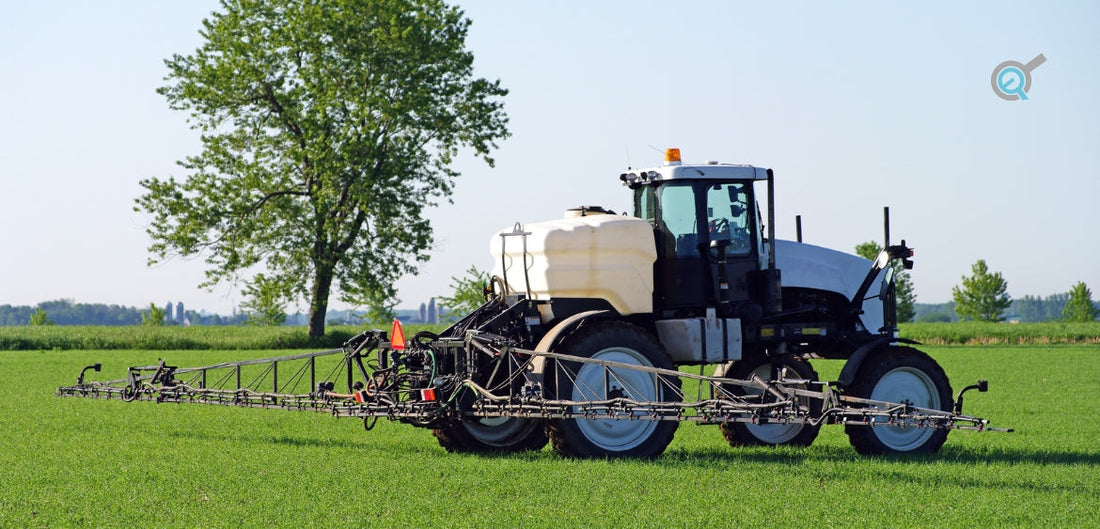Los actuadores lineales eléctricos son un componente crucial para impulsar un movimiento lineal preciso y controlado en maquinaria agrícola, desde cosechadoras hasta la agricultura vertical. Sin embargo, como cualquier componente eléctrico, los actuadores lineales requieren un uso e integración adecuados para evitar fallos eléctricos. Debido a la amplia gama de requisitos de la maquinaria agrícola, es necesario considerar diversas variables y prácticas operativas al utilizar actuadores lineales eléctricos. Este artículo abordará las causas comunes, las técnicas de prevención y los consejos de mantenimiento para evitar fallos eléctricos en la maquinaria agrícola mediante el uso de actuadores y garantizar un funcionamiento fiable.
Causas comunes de fallas eléctricas en maquinaria agrícola

El uso de un actuador que no tenga las clasificaciones adecuadas para su aplicación puede producir una tensión innecesaria y provocar una falla prematura.
Fallo de aislamiento: Los sellos o cubiertas protectoras inadecuados provocan la entrada de humedad, cortocircuitos y picos de tensión. Se recomienda un diseño robusto para actuadores lineales y cajas de protección con alta resistencia ambiental para maquinaria agrícola de exterior.
Problemas de cableado : Un cableado desordenado puede provocar errores de cableado, dificultar la resolución de problemas y aumentar el riesgo de cortocircuitos. Estos riesgos a menudo pueden provocar fallos eléctricos o complejidades adicionales que a su vez pueden provocar futuras averías eléctricas.

Sobrecarga: Sobrecargar un actuador lineal puede provocar una falla prematura. Esto se debe a que los componentes eléctricos y mecánicos internos del actuador fueron diseñados específicamente para soportar la capacidad de carga nominal y podrían sufrir una tensión excesiva al exceder los límites de capacidad de carga.
Elija el actuador adecuado para su maquinaria agrícola

Uno de los factores más importantes para evitar fallos eléctricos es seleccionar el actuador lineal adecuado para su caso de uso específico. Al elegir un actuador, asegúrese de considerar factores de rendimiento como:
- Compatibilidad de consumo de voltaje y corriente: para garantizar que los sistemas integrados preexistentes emitan el voltaje adecuado para operar los actuadores elegidos y al mismo tiempo suministren suficiente consumo de corriente para el motor.
- Capacidad de carga : Calcular la fuerza que realmente se ejercerá sobre un actuador ayuda a confirmar qué modelos tienen la capacidad suficiente para la aplicación. Los actuadores industriales tienen un diseño robusto para aplicaciones que requieren una alta capacidad de carga.
- Velocidad de desplazamiento: la velocidad de desplazamiento correcta garantiza que un actuador pueda desplazarse a una posición determinada en el tiempo requerido.
- Longitud de carrera: la distancia de recorrido del eje del actuador debe ser adecuada para su caso de uso para evitar daños que puedan ocurrir debido a una extensión excesiva o una retracción insuficiente debido a carreras incorrectas.
- Dimensiones (requisitos de largo, ancho y altura): asegúrese de que las medidas del actuador elegido se ajusten a las limitaciones de espacio de instalación.
- Clasificación IP (protección contra entrada): seleccione actuadores que tengan suficiente resistencia ambiental para evitar la entrada de humedad y protección contra niebla salina para resistencia a la corrosión si es necesario.
- Requisitos de retroalimentación posicional : permite funciones de actuador inteligente, como múltiples actuadores que se mueven juntos de manera sincrónica, ajustes preestablecidos de memoria, visualización de posición, etc.

Instalación y alineación adecuadas del actuador

La correcta instalación de los actuadores lineales es esencial tanto para el cableado como para la integración física en la maquinaria agrícola. La práctica más segura es seguir las instrucciones del fabricante y utilizar los herrajes de montaje correctos para cada componente de la maquinaria agrícola. Evite apretar demasiado los puntos de pivote, ya que esto puede generar fricción excesiva durante el movimiento de rotación y provocar un desgaste prematuro del actuador, que deberá ejercer una fuerza excesiva para superar la fricción. Además, asegúrese de que el eje del actuador esté correctamente alineado para que se mueva en línea recta y así evitar daños por carga lateral.

Durante la instalación, un cableado ordenado y ordenado reduce la posibilidad de enredos, cableado incorrecto de componentes y cortocircuitos. Esta práctica también facilita reparaciones y reemplazos de componentes más rápidos, ya que mejora la visibilidad de los cables para el usuario, lo que facilita la resolución de problemas en futuras inspecciones y mantenimiento de campo.
Seguridad y protección eléctrica para maquinaria agrícola

En caso de un cortocircuito inesperado debido a un fallo de aislamiento, problemas de cableado o entrada de humedad, un fusible ofrece seguridad y protección adicionales a sus sistemas eléctricos. Integrar un fusible en línea en el cableado de su actuador es una forma sencilla y útil de proteger sus componentes electrónicos de fallos eléctricos causados por cortocircuitos.
Debido a la corriente de entrada del motor de CC de nuestro actuador lineal eléctrico, recomendamos elegir un fusible de arranque o un fusible de retardo. Elija un fusible con la corriente nominal adecuada, que puede determinarse calculando el consumo máximo de corriente de su aplicación y utilizando la siguiente ecuación:
Corriente nominal del fusible = Corriente real ÷ 0,75
Consejos de inspección y mantenimiento para actuadores

Las inspecciones periódicas son una parte esencial de las técnicas de prevención para recopilar datos sobre áreas que pueden necesitar mejoras antes de que se produzcan fallos eléctricos, previniéndolos así:
Inspecciones visuales: Asegúrese de revisar periódicamente si hay signos de desgaste o daños, como actuadores con cables desgastados y conexiones sueltas. Además, examine los sellos de goma, las juntas y la integridad estructural de los componentes mecánicos para garantizar que todos estén protegidos de la humedad.
Prácticas de limpieza: los lavados y los procedimientos de limpieza regulares son importantes para eliminar cualquier suciedad, residuos o contenidos corrosivos que puedan causar óxido, daños o atascamiento de componentes mecánicos.
Lubricar las piezas móviles: los actuadores lineales eléctricos son autolubricantes, sin embargo, ocasionalmente se recomienda lubricar las bisagras, los pivotes y las piezas móviles unidas al actuador para garantizar un funcionamiento suave y una eficiencia energética.
EN RESUMEN
Las fallas eléctricas de los actuadores lineales en maquinaria agrícola pueden evitarse seleccionando los actuadores adecuados, realizándolos correctamente, realizando inspecciones y mantenimiento regulares, y evitando la sobrecarga. Siguiendo estas pautas de prevención, puede garantizar un funcionamiento confiable y evitar costosas paradas por fallas.
Como uno de los principales proveedores de actuadores lineales eléctricos y productos de control de movimiento, Progressive Automations ofrece flexibilidad, calidad, soporte y experiencia de campo líderes en la industria para satisfacer todas sus necesidades. Si tiene alguna otra pregunta sobre lo que podemos ofrecerle, ¡no dude en contactarnos! Somos expertos en lo que hacemos y queremos asegurarnos de que encuentre las mejores soluciones para su maquinaria agrícola.
ventas@progressiveautomations.com | 1-800-676-6123




